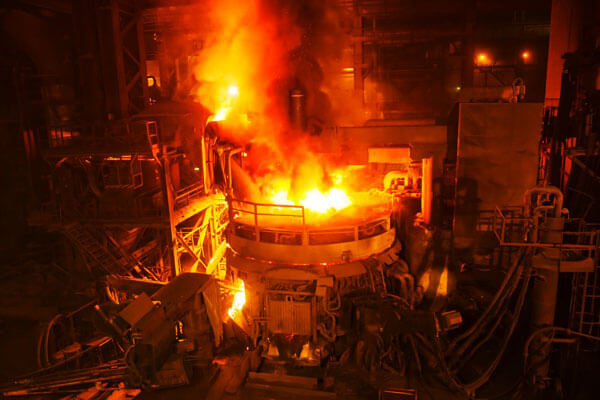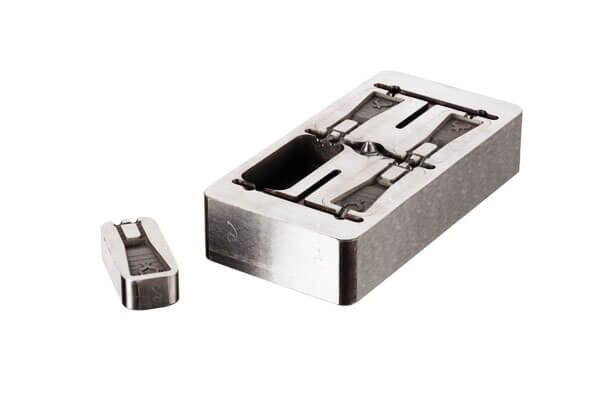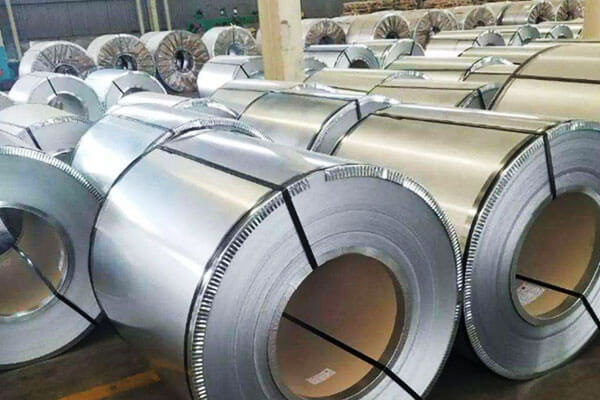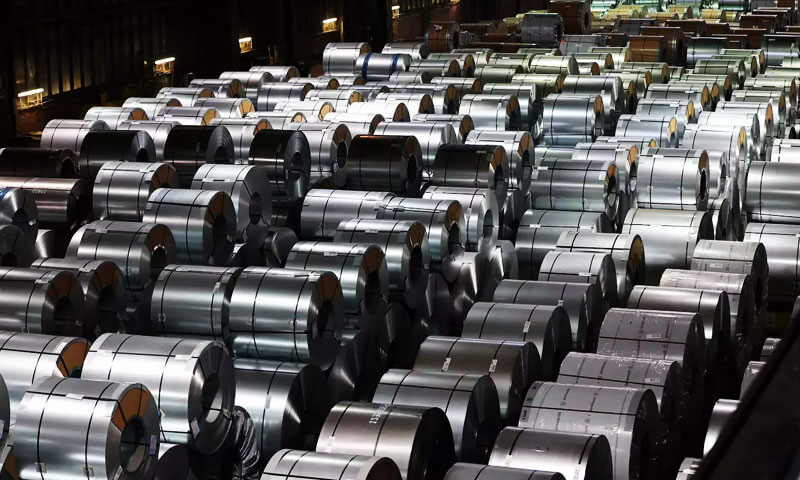Introduction
Dans 1889, at the Paris World Exposition, a towering steel structure stunned the world—the Eiffel Tower.
Composed of 18,038 wrought iron components, this engineering marvel not only symbolized the pinnacle of structural innovation but also marked humanity’s official entry into the Steel Age.
From the framework of skyscrapers to the intricate components of medical devices, steel has permeated every aspect of modern civilization with its irreplaceable role.
Beyond shaping industrial development, it has been a driving force behind global infrastructure expansion and technological progress.
This article delves into the scientific nature of steel, its manufacturing techniques, industrial evolution, et les tendances futures,
revealing how this essential material continues to define the boundaries of human civilization.
1. A Historical Review of Steel
Human exploration of steel dates back to 1800 BCE in Anatolia, but the true industrial revolution began in the 19th century.
Dans 1856, Henry Bessemer invented the Bessemer converter, qui a augmenté l'efficacité de la production d'acier vingt-borde,
accélérant directement le développement rapide des chemins de fer, construction navale, et génie mécanique.
Au 20e siècle, l'adoption généralisée de Technologie de coulée continue Amélioration de l'efficacité de production, réduction des déchets de matériaux, et une qualité de produit améliorée.
Au 21e siècle, L'industrie sidérurgique mondiale a subi une transformation importante.
La Chine est devenue la force dominante, en comptabilité 53.9% de la production mondiale de l'acier brut en 2023.
En même temps, Le resserrement des réglementations environnementales et des objectifs de neutralité en carbone poussent l'industrie vers une fabrication à faible teneur en carbone et intelligente.
Une revue de l'histoire du développement de Steel montre que chaque percée technologique a considérablement élargi ses applications,
Permettre à l'acier de pénétrer au-delà de la construction traditionnelle dans l'aérospatiale, dispositifs médicaux, and renewable energy sectors.
2. Steel Manufacturing Processes
Modern steel production is a highly sophisticated industrial system that integrates material science, engineering precision, et durabilité environnementale.
Its core stages include raw material selection, smelting, raffinage, et mise en forme, as well as sustainable and circular economy practices.
Raw Materials & Extraction
The quality of iron ore, coking coal, and alloying elements determines the final properties of steel.
Par exemple, high-purity iron ore with a high Fe content significantly reduces impurities, enhancing mechanical strength and corrosion resistance.
À ce jour 2024, global iron ore production has reached 2.2 billion tons, with resource distribution
and extraction costs playing a crucial role in shaping the competitive landscape of the steel industry.
Ironmaking & Steelmaking Processes
Modern steel production primarily relies on haut fourneau (BF), direct reduced iron (Dri), et basic oxygen furnaces (BOF).
La technologie DRI est devenue une méthode essentielle pour la production d'acier vert, comme il réduit Émissions de carbone par 30% par rapport aux hauts fourneaux traditionnels.
En plus, fours à arc électrique (EAF), qui utilisent l'acier de ferraille recyclé, avoir a augmenté leur part de production mondiale pour 28%,
réduire considérablement la consommation d'énergie et contribuer à un modèle de production plus durable.

Raffinage & Mise en forme
Une fois que l'acier fondu subit un raffinage secondaire, il est traité à travers coulée continue et roulement pour produire des matériaux de haute précision
tel que Feuilles en acier inoxydable ultra-minces et acier à haute résistance de qualité aérospatiale.
Les techniques avancées de contrôle du refroidissement améliorent la structure des grains et la résistance à la fatigue, Rendre les produits en acier plus adaptés aux environnements extrêmes.
Durabilité & Économie circulaire
Le recyclage en acier est une pierre angulaire de la durabilité de l'industrie moderne.
Chaque tonne des aciers recyclés empêche l'émission d'environ 1.5 des tonnes de co₂, Réduire considérablement l’empreinte carbone de l’industrie.
Actuellement, le Le taux de recyclage mondial de l'acier a atteint 85%, Renforcer la transition vers une production d'acier plus verte et plus efficace.
3. Classifying Steel: Types and Their Unique Characteristics
Steel est l'un des matériaux les plus polyvalents de l'ingénierie moderne, et son adaptabilité sans fin découle du contrôle précis de sa composition chimique.
En faisant varier la teneur en carbone et en ajoutant différents éléments d'alliage, Les fabricants créent des aciers avec des propriétés uniques adaptées à des applications spécifiques.
Acier au carbone
Carbone sert de base à d'innombrables applications en raison de son équilibre de force et de ductilité.
Ses propriétés dépendent principalement de la teneur en carbone, qui va généralement de 0.05% à 2.0%.

Acier à faible teneur en carbone (Acier doux):
- Caractéristiques: Contient moins de 0.3% carbone, le rendre très malléable, Facile à former, et soudable.
- Applications: Utilisé beaucoup dans les corps automobiles, poutres structurelles, and consumer goods where high strength is not the primary concern.
- Point de données: Low-carbon steel often exhibits a yield strength of around 250–350 MPa,
making it ideal for applications where moderate strength and excellent formability are required.
Acier moyen en carbone:
- Caractéristiques: With carbon content between 0.3% et 0.6%, this steel offers an enhanced strength profile and improved wear resistance, although its ductility decreases.
- Applications: Often used for automotive components like gears and shafts, as well as in the manufacture of railway tracks.
- Point de données: Typical tensile strengths range from 400–600 MPa, providing a balance between strength and ductility.
En acier à haute teneur en carbone:
- Caractéristiques: Contains between 0.6% et 2.0% carbone, resulting in increased hardness and wear resistance, though it sacrifices ductility.
- Applications: Ideal for cutting tools, ressorts, et fils à haute résistance, where durability under stress is critical.
- Point de données: Les aciers à haute teneur en carbone peuvent atteindre des résistances à la traction 800 MPA après un traitement thermique approprié, les rendre parfaits pour les applications lourdes.
Acier en alliage
Acier allié améliore les propriétés de base de l'acier au carbone en ajoutant des éléments tels que le manganèse, chrome, nickel, et molybdène.
Cette personnalisation permet des attributs de performances sur mesure comme une ténacité améliorée, résistance à la chaleur, et résistance à la corrosion.

Acier à faible alliage:
- Caractéristiques: Comprend généralement de petits pourcentages (jusqu'à 5%) d'éléments d'alliage qui renforcent la force sans une perte significative de ductilité.
- Applications: Utilisé dans les applications structurelles, pipelines, et des pièces automobiles où une résistance élevée et une ténacité modérée sont nécessaires.
Acier à alliage élevé:
- Caractéristiques: Intègre une proportion plus élevée d'éléments d'alliage pour offrir des performances supérieures,
y compris une résistance à l'usure améliorée et la capacité de résister aux températures extrêmes. - Applications: Commun dans les secteurs de la génération aérospatiale et de puissance, où les matériaux doivent supporter des environnements durs.
- Point de données: Certains aciers à haut alliage présentent des limites d'élasticité supérieures 600 MPA et sont conçus pour résister à la déformation même à des températures supérieures à 600 ° C.
Acier inoxydable
Acier inoxydable se distingue par son excellente résistance à la corrosion, réalisé en incorporant au moins 10.5% chrome dans l'alliage.
Le chrome forme une couche passive d'oxyde de chrome à la surface, protéger le matériau de la rouille et de la dégradation de l'environnement.

Acier inoxydable austénitique:
- Caractéristiques: Non magnétique, Très résistant à la corrosion, et noté pour son excellente formabilité et sa soudabilité.
- Applications: Largement utilisé dans les appareils de cuisine, équipement de traitement chimique, et les dispositifs médicaux.
- Point de données: Des notes comme 304 et 316 L'acier inoxydable montre fréquemment une résistance à la traction dans la plage de 500–750 MPa,
combiné à une résistance à la corrosion exceptionnelle dans divers environnements.
Acier inoxydable martensitique:
- Caractéristiques: Offre une dureté et une force plus élevées par rapport aux types austénitiques, bien qu'il soit moins résistant à la corrosion et plus difficile à souder.
- Applications: Commonly found in cutting tools, instruments chirurgicaux, and high-wear environments.
- Point de données: Typical hardness values can reach up to 600 HRC après traitement thermique, making them suitable for high-performance applications.
Acier inoxydable ferritique:
- Caractéristiques: Magnetic and less ductile than austenitic stainless steel but offers good resistance to stress corrosion cracking.
- Applications: Utilized in automotive exhaust systems and industrial equipment that requires moderate strength with good corrosion resistance.
Acier inoxydable duplex:
- Caractéristiques: Combines the best of austenitic and ferritic stainless steels, offering high strength and improved resistance to corrosion and stress corrosion cracking.
- Applications: Ideal for chemical processing, Structures offshore, et applications marines.
- Point de données: Duplex steels often boast yield strengths between 550–750 MPa, significantly outperforming many austenitic steels in terms of strength.
Tool and High-Speed Steels
AFFAIRES DE TOLL et aciers à grande vitesse are specialized alloys designed for the manufacture of cutting tools, décède, et moules.
They require exceptional hardness, se résistance à l'usure, and the ability to retain strength at high temperatures.

Acier à outils:
- Caractéristiques: Formulated with tungsten, molybdène, vanadium, and cobalt, these steels excel in hardness and durability under extreme conditions.
- Applications: Employed in the production of hand tools, décède, and other precision tooling required for high-pressure applications.
- Point de données: Some tool steels achieve hardness levels exceeding 65 HRC, making them capable of enduring prolonged use without significant wear.
Acier à grande vitesse (HSS):
- Caractéristiques: Known for its ability to maintain hardness even at high temperatures, HSS is critical for high-speed machining and cutting applications.
- Applications: Frequently used in drill bits, end mills, and other cutting tools in manufacturing processes.
- Point de données: High-speed steels typically sustain operating temperatures up to 600°C while retaining their cutting performance, thereby increasing production efficiency.
4. Unpacking Steel’s Physical and Mechanical Properties
Dans cette section, we break down the essential physical and mechanical properties of steel, highlighting how these characteristics drive its diverse applications.
Propriétés physiques
Density and Weight
- Steels boasts a density of approximately 7.85 g / cm³, which strikes an excellent balance between robustness and manageability.
This optimal density enables engineers to design structures that support heavy loads without incurring excessive weight. - Par exemple, when constructing bridges or high-rise buildings, steel’s density allows for significant load-bearing capacity while maintaining structural efficiency.
Melting Point and Thermal Stability
- With a melting point that typically ranges between 1,370°C and 1,510°C, steel withstands extreme temperatures with ease.
This high melting point ensures that steels components remain stable even in high-heat environments such as turbine engines or industrial furnaces. - De plus, the thermal stability of steel is critical in applications like automotive components and power plants, where consistent performance under heat is essential.
Conductivité thermique
- Steel generally exhibits a thermal conductivity around 50 W / m · k, which allows it to effectively transfer heat.
This property makes steel an ideal choice for applications that demand efficient heat dissipation, such as heat exchangers and engine parts. - En outre, effective thermal conductivity helps minimize hotspots during high-speed machining and industrial processing.
Coefficient de dilatation thermique
- Steel’s coefficient of thermal expansion, environ 11-13 µm / m · ° C, ensures that it maintains dimensional stability under varying temperature conditions.
This stability is particularly important in precision engineering and construction, where even minor distortions can compromise structural integrity.
Propriétés magnétiques
- Steel’s inherent ferromagnetic properties allow it to be easily magnetized.
This attribute proves invaluable in the design of electric motors, transformateurs, and various electronic components, where controlled magnetic behavior is essential.
Propriétés mécaniques
Traction et limite d'élasticité
- Steel stands out for its impressive tensile strength, which can range from 400 MPa to over 800 MPa after advanced heat treatments.
This strength enables steels to support massive loads, making it indispensable in large-scale construction and heavy machinery. - En outre, the yield strength, généralement entre 250 MPA et 350 MPa for common structural steels,
ensures that steel components resist permanent deformation under high stress.
High-strength alloys may even surpass 500 MPA, meeting the rigorous demands of aerospace and automotive applications.
Ductilité et de la ténacité
- Steel’s ability to deform under tensile stress without fracturing – known as ductility – proves vital in absorbing energy during impacts.
Par exemple, advanced high-strength steels in automotive frames can absorb impact energies up to 120 kJ/cm³, thereby enhancing passenger safety. - En outre, toughness—the capacity to withstand shock and vibration—ensures that steels can endure repetitive stress cycles,
which is critical for applications in bridges, railways, et machines.
Résistance à la fatigue
- The cyclic loading that many structures endure requires materials that can resist fatigue over time.
Steel’s excellent fatigue resistance guarantees that components such as beams and vehicle frames remain reliable even under constant load fluctuations,
thus extending the lifespan of critical infrastructure.
Résistance à la dureté et à l'usure
- Steel’s hardness can be significantly enhanced through alloying and heat treatment processes, resulting in improved wear resistance.
This property is crucial for applications such as cutting tools, engrenages, et les roulements, where prolonged exposure to friction and stress demands a material that maintains its integrity over time. - Advanced heat treatments and alloying techniques enable certain steels to achieve hardness levels
that not only resist abrasion but also optimize performance in high-speed industrial processes.
Interplay of Properties and Their Impact
Synergistic Strength and Ductility
- The unique combination of high tensile strength and substantial ductility makes steels both robust and flexible.
This synergy allows it to support significant loads while absorbing shocks, which is critical in structures like skyscrapers and bridges.
Optimized Through Alloying and Heat Treatments
- Manufacturers continuously refine steel by adjusting carbon content and adding elements such as chromium, nickel, et manganèse.
These enhancements lead to ultra-high-strength steels that can exceed 1 GPa in tensile strength while maintaining enough ductility to withstand dynamic stresses. - En outre, ongoing advancements in heat treatment processes have improved fatigue resistance and overall performance,
ensuring that steels remains at the forefront of engineering materials.
Thermal and Mechanical Synergy
- Steel’s ability to efficiently transfer heat complements its mechanical robustness, enabling it to perform reliably under harsh conditions.
This thermal-mechanical interplay proves essential in applications where materials
must endure both high temperatures and significant mechanical stress, such as in aerospace engines and industrial boilers.
5. Processing and Manufacturing of Steel
L'avancement continu de la technologie de traitement de l'acier a considérablement amélioré la valeur ajoutée des produits en acier, Permettre des performances plus élevées, durabilité, et efficacité.
Traitement thermique: Enhancing Strength and Durability
Les processus de traitement thermique jouent un rôle essentiel dans la modification de la microstructure des aciers pour optimiser leurs propriétés mécaniques,
comme la dureté, dureté, et porter une résistance. Les techniques courantes incluent:
- Recuit - réduit le stress interne, améliore la machinabilité, et améliore la ductilité.
- Normalisation - affine la structure des grains et améliore la résistance mécanique.
- Éteinte - Le refroidissement rapide augmente la dureté et la résistance à l'usure.
- Tremper - Ajuste la ténacité et réduit la fragilité après la trempe.
Par exemple, La technologie d'extinction laser peut augmenter la dureté de surface des engrenages pour HRC60, réduire le taux d'usure par 70%,
prolongeant ainsi la durée de vie dans des applications de haute charge telles que les transmissions automobiles et les machines industrielles.
Transformation du froid: Improving Precision and Surface Quality
Cold processing methods refine the dimensions and surface finish of steel components, offering superior accuracy and enhanced mechanical properties. Key techniques include:
- Roulement froid – Increases strength and surface finish, commonly used in automotive panels and precision components.
- Cold Drawing – Improves dimensional accuracy and tensile strength, essential for producing fine steel wires and tubing.
- Cold Extrusion – Enhances uniformity and mechanical properties, often used in manufacturing fasteners and structural parts.
Avec 5-axis CNC machining, the precision of turbine blade manufacturing can be controlled within ± 0,005 mm,
ensuring optimal aerodynamic efficiency in aerospace and power generation industries.
Traitement de surface: Enhancing Corrosion Resistance and Aesthetic Appeal
Surface treatments provide protective layers that extend the lifespan of steel products, improve wear resistance, and enhance visual appeal. Advanced surface treatment methods include:

- Galvanisation – Zinc coating protects steel from rust and oxidation.
- Placage chromé – Increases hardness and provides a sleek, finition résistante à la corrosion.
- Phosphation – Forms a protective layer that enhances paint adhesion and corrosion resistance.
Notamment, nano-galvanizing technology has revolutionized corrosion protection by extending the anti-corrosion cycle to 50 années while simultaneously reducing zinc consumption by 60%,
making it an environmentally sustainable solution for infrastructure and marine applications.
Welding Technology: Achieving Strong and Reliable Joints
Steel structures often require advanced soudage techniques to ensure durability and load-bearing capacity.
The choice of welding method depends on factors such as material composition, joint design, et exigences de demande. Common welding techniques include:
- Soudage à l'arc – Versatile and widely used in structural steel fabrication.
- Soudage au laser – Provides high precision with minimal heat distortion, suitable for aerospace and medical components.
- Soudage du faisceau d'électrons – Ideal for high-strength joints in vacuum environments, commonly used in aerospace and nuclear industries.
Innovations dans automated robotic welding et soudage par agitation à la friction (FSW) have further improved joint integrity and manufacturing efficiency,
making complex assemblies more reliable and cost-effective.
Fabrication de précision: Achieving Unprecedented Accuracy
Precision manufacturing is crucial in industries that require high-performance steel components with tight tolerances.
The development of advanced machining technologies has revolutionized the manufacturing of complex steel parts. Key techniques include:
- Usinage CNC Centers – Enable high-speed, high-precision cutting and shaping.
- Électroérosion à fil (Usinage par électroérosion) – Allows for ultra-fine cutting of intricate steels components.
- GED (Usinage par électroérosion) – Enhances precision in hard-to-machine steel alloys.
These cutting-edge technologies have led to unprecedented improvements in the quality and performance of steels products,
enabling their widespread application in aerospace, implants médicaux, and high-performance engineering.
6. The Global Impact and Applications of Steel
Steel’s influence spans multiple industries, each benefiting from its unique properties:
- Construction et infrastructure: Steel forms the backbone of modern urban landscapes.
Structural steel supports skyscrapers, ponts, and railways, while reinforcing bars (rebar) provide essential strength to concrete structures.
Par exemple, the Hong Kong-Zhuhai-Macau Bridge utilized 2 million tons of steel, ensuring a lifespan exceeding 120 years under harsh marine conditions. - Automotive and Aerospace: High-strength steel alloys ensure vehicle safety and fuel efficiency.
En aérospatial, L'acier contribue au poids léger, Airfères durables et composants du moteur qui résistent à des températures et des pressions extrêmes. - Fabrication et équipement industriel: Des machines à outils aux machines industrielles robustes, La robustesse et la polyvalence de l'acier le rendent indispensable.
Son utilisation dans l'équipement de précision a transformé l'efficacité de la production à travers le monde. - Produits de consommation et médicaux: La résistance à la corrosion de l'acier inoxydable et la biocompatibilité le rendent idéal pour les appareils de cuisine, implants médicaux, et des instruments chirurgicaux.
Les alliages avancés tels que 316LVM offrent des performances supérieures dans les applications de santé exigeantes.
7. Current State of the Steel Industry: Une analyse complète
L'industrie sidérurgique est à un tournant, Équilibrer les progrès technologiques avec les objectifs de durabilité tout en s'adaptant au changement de paysages économiques et géopolitiques.
Global Market Overview: The Push for Carbon-Neutral Steel
Les pays du monde investissent dans des processus d'acier à l'environnement.
Sweden’s hydrogen metallurgical test furnace is now operational, targeting zero carbon emissions by 2030.
Entre-temps, leading producers are implementing low-emission production techniques to meet stringent global regulations.
Supply Chain Management: Ensuring Stability and Efficiency
Raw material availability, logistics, and international trade policies remain critical factors affecting steel production.
Companies are adopting smart supply chain solutions to enhance stability and efficiency.
Par exemple, Anshan Iron and Steel’s smart factory, utilizing full-process AI, has achieved a 99.7% defect detection rate, significantly improving production accuracy and reducing waste.
Technological Innovation: The Evolution of High-Performance Steel
Cutting-edge developments are redefining the steel industry:
- Smart factories – AI-driven systems enable real-time monitoring and optimization of production.
- Léger, AFFAIRS DE SUBRIGNE – Essential for the automotive and aerospace secteurs, reducing fuel consumption and improving safety.
- Nanocrystalline steel – While offering strengths above 2 GPA, it is still in early-stage development,
with production costs 40% lower than titanium alloys but facing challenges in large-scale industrial applications.
Climate Change Strategies: Industry-wide Decarbonization Efforts
The steel industry is taking proactive measures to reduce emissions:
- China’s commitment – Plans to lower carbon emission intensity by 18% par 2030 through advanced CCUS and energy-efficient processes.
- Electrification and alternative fuels – The adoption of hydrogen-based steelmaking and expansion of fournaise à arc électrique (EAF) production are key to achieving net-zero emissions.
8. Future Trends and Challenges in the Steel Industry
As the steel industry evolves to meet global demand, sustainability goals, and technological advancements, it faces both transformative opportunities and significant challenges.
The sector navigates a landscape shaped by innovation, environmental policies, and shifting economic conditions.
Technological Innovation: Smart Manufacturing and High-Performance Materials
L'intégration de automation, intelligence artificielle (IA), and smart factories is reshaping steel production.
AI-driven systems optimize production efficiency, réduire les déchets, and enhance quality control.
La montée nanocrystalline steel, boasting strengths exceeding 2 GPA, is revolutionizing high-performance applications,
potentially rivaling titanium alloys in aerospace and advanced engineering.
Entre-temps, breakthroughs in 3D printing of steel allow for complex, lightweight designs with superior mechanical properties.
Initiatives de durabilité: Decarbonization and Green Production
In response to climate change and carbon reduction targets, the steel industry is actively adopting cleaner production technologies. Key sustainability trends include:
- Hydrogen-based steelmaking – Countries like Sweden are pioneering hydrogen metallurgy, aiming for carbon-neutral steel by 2030.
- Carbon capture, utilization, and storage (CCUS) – China’s steels sector aims to cut carbon intensity by 18% par 2030, leveraging carbon capture and recycling technologies.
- Fours à arc électrique (EAFs) – Growing reliance on EAFs, which recycle scrap steel, reduces energy consumption and emissions compared to traditional blast furnaces.
Competitive Material Landscape: The Challenge of Alternatives
Steel faces competition from emerging materials such as composites, alliages en aluminium, and nanomaterials, en particulier dans les industries automobiles et aérospatiales.
Cependant, steel’s cost-effectiveness, durabilité, and recyclability continue to make it the backbone of industrial manufacturing.
Innovations dans à haute résistance, lightweight steels are further enhancing its adaptability in structural applications.
Global Market Dynamics: Trade Policies and Economic Shifts
The steel industry is deeply influenced by geopolitical factors, trade regulations, and economic trends:
- Supply chain disruptions – Fluctuating raw material prices and political trade barriers impact global steels production.
- Regional growth – Rapid industrialization in Southeast Asia and Africa is driving increased steel consumption.
- Strategic alliances – Steels producers are forming global partnerships to enhance resource efficiency and market expansion.
9. Conclusion
Steel not only transformed the physical landscape—from the Eiffel Tower to modern urban skylines—but also reshaped human progress itself.
As the world transitions toward more sustainable and innovative manufacturing processes,
steel continues to evolve, driven by advancements in technology and a relentless commitment to excellence.
Its journey from ancient iron production to modern smart factories encapsulates the spirit of industrial innovation and human ingenuity.
Si vous recherchez des produits en acier ou en acier de haute qualité, choix LangIl est la décision parfaite pour vos besoins de fabrication.


